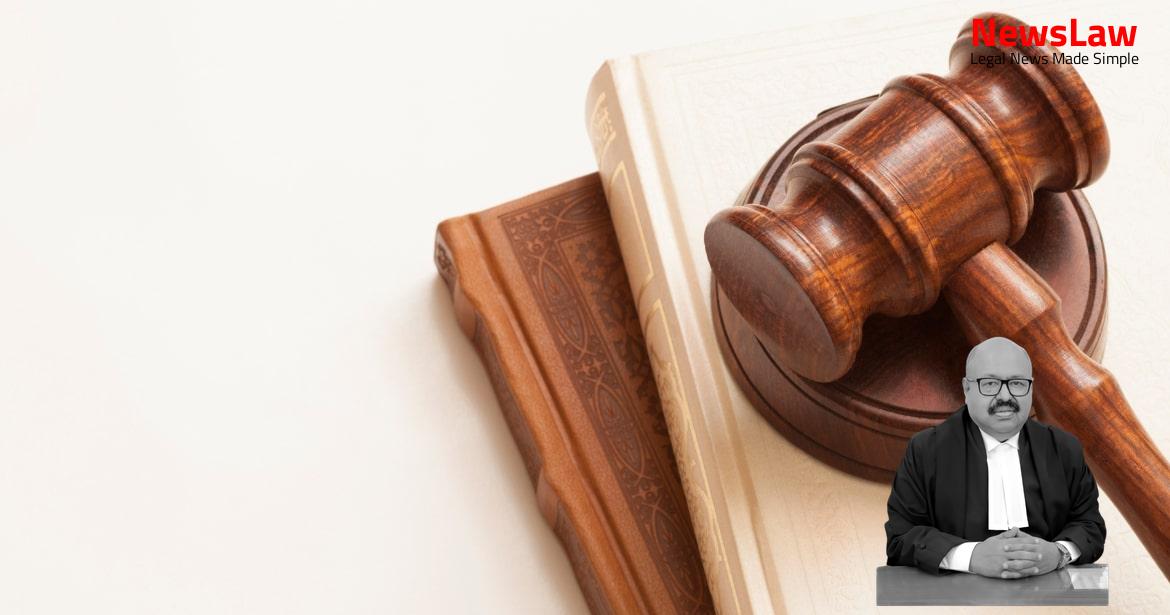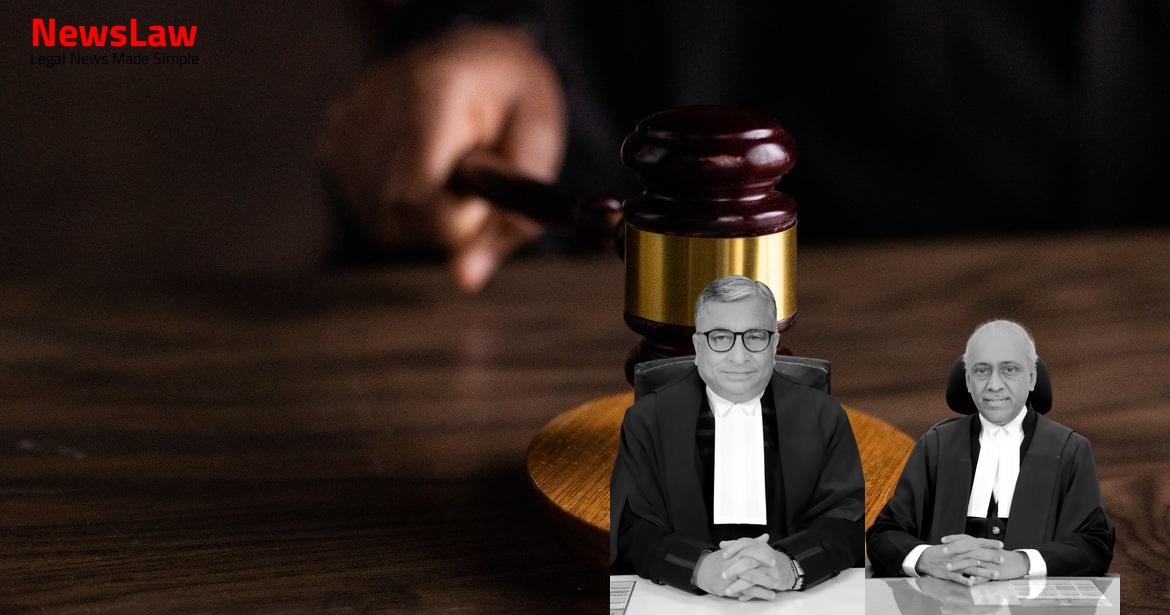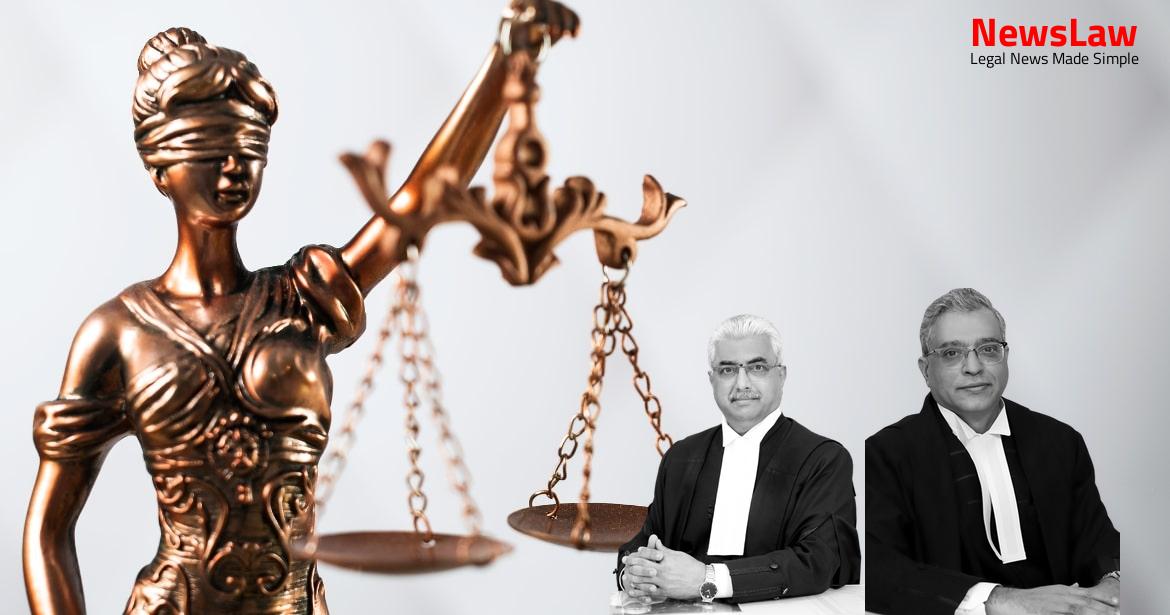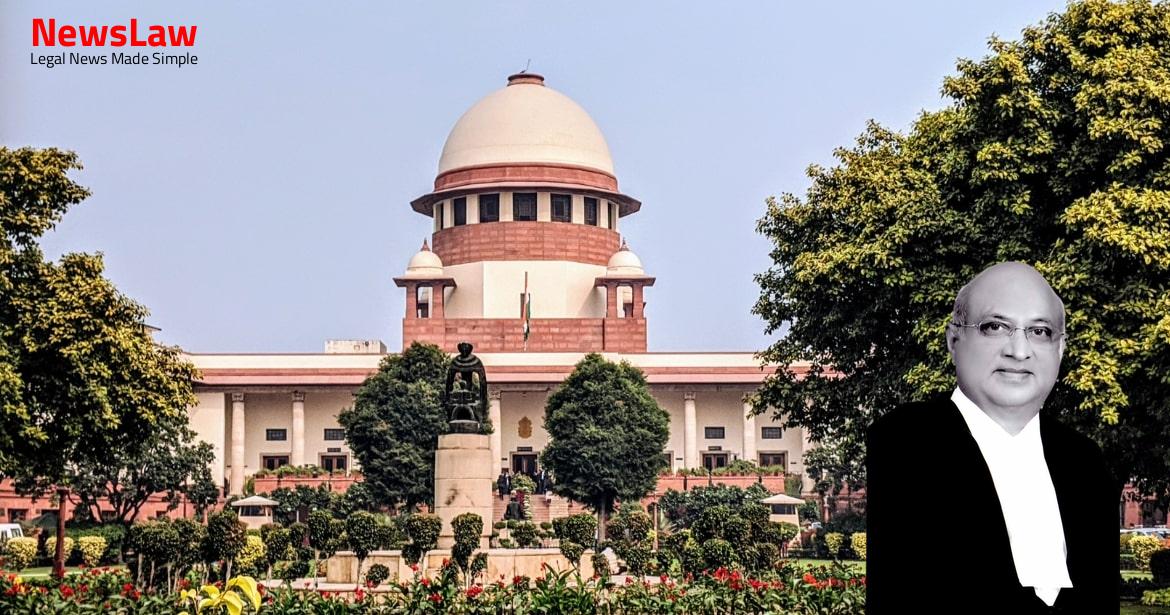Delve into the intricate legal analysis carried out by the court in a criminal conspiracy case involving circumstantial evidence. The case sheds light on the nuances of burden of proof, the interpretation of witness testimony, and the requisite standard of evidence to establish guilt beyond a reasonable doubt. Stay tuned to unravel the complexities of legal reasoning in criminal law.
Facts
- Surendra and Ramveer’s appeal was dismissed by the High Court due to lack of credible explanation for the incident
- Case against the appellants was based on circumstantial evidence
- Om Prakash, one of the accused, died during trial and his case was abated
- Trial court convicted Surendra Kumar under Section 302 read with Section 34 IPC and Ramveer under Section 120B IPC
- High Court confirmed the conviction of the appellants but acquitted Rajveer and Shiv Kumar in the connected criminal appeal
- High Court accepted the conspiracy theory of the prosecution for the murder of Kamla Rani
- The incident involved armed miscreants ambushing the scooter, taking Kamla Rani to a sugarcane field, and shooting her before robbing her of ornaments
- Dhan Singh (PW-1) and Karamveer (PW-2) witnessed two miscreants removing ornaments from the body of Kamla Rani near the site of the incident.
- The appellants and their father Om Prakash also reached the Police Station.
- Surendra Kumar rode to village Phlawada to inform Baldev, the father of Kamla Rani, about the incident.
- Rajveer and Shiv Kumar alias Pappu were arrested as suspects of robbery based on the eyewitness accounts of PW1 and PW2.
- Preliminary investigation conducted by S.I Ramachandra Singh (PW5) included preparing the Panchnama and sending the dead body for autopsy.
- The FIR was filed by Baldev Singh at Phlawada Police Station around 5:30 pm, mentioning allegations of maltreatment in the deceased’s matrimonial home.
- The accused were detained in the police lockup and later formally arrested on charges of conspiracy and murder.
- Jewelry items and a locked suitcase found near the body were seized by PW-5 during the investigation.
- Chargesheet filed against 5 accused, with specific charges against each individual.
- Dr. N.K Maheshwari’s autopsy report cited hemorrhage & shock as the cause of death due to ante-mortem injury.
- SHO Amrat Lal took over the investigation upon his return and seized the scooter from Baldev’s residence.
- Autopsy conducted by Dr. N.K Maheshwari noted specific antemortem injuries on the body including firearm wounds on the neck and other areas.
Also Read: Insurance Claim Repudiation due to Fire Incident: Court’s Legal Analysis
Analysis
- In cases of circumstantial evidence, all established facts should be consistent only with the guilt of the accused.
- The circumstances must be conclusive and exclude all hypotheses except the guilt of the accused.
- The burden of proving guilt lies on the prosecution and cannot be shifted to the accused.
- Guilt should not be inferred based on a particular reaction by an individual.
- Courts should not draw adverse inferences based on expected reactions of individuals.
- Reactions to witnessing a crime vary greatly, and there is no set rule for a ‘natural reaction.’
- The chain of evidence must be complete to eliminate reasonable doubt of the accused’s innocence.
- The nature and essential proof required in criminal cases were discussed in detail in previous cases.
- No universal rule can be laid down for the reaction of a person in a given circumstance.
- The testimony of PW-6 and PW-7, who were present at the spot but did not implicate the brother-in-law, was recorded much later after their release from jail, raising doubts on their credibility.
- The prosecution failed to prove any conspiracy or meeting of minds between the accused to eliminate Kamla Rani, weakening the case against the appellants.
- The Court erred in considering the conduct of the accused as suspicious without solid evidence linking them to the crime.
- The burden of proof must be on the prosecution, and the benefit of doubt should favor the accused.
- No acceptable evidence was provided to establish the crime against the appellants, leading to an erroneous shift in the burden of proof using Section 106 of the Evidence Act.
- Conspiracy must be based on solid evidence, and the lack of evidence linking the accused shows the implausibility of the conspiracy theory.
- Suspicious conduct of the appellant after the incident cannot be solely used to implicate him without corroborative evidence.
- The motive attributed to the appellants by PW-6 and PW-7 fails legal scrutiny without corroborative evidence.
- The unhappiness of Ramveer with his wife does not establish a strong enough motive for murder, and his role in the incident is not directly evidenced.
- The conduct of the appellants, including informing the deceased’s father promptly, should not be misconstrued as evidence of guilt.
- The Court should not draw inferences based on assumed reactions or conduct of witnesses, but rather assess the evidence presented.
- Failure to establish criminal conspiracy between the accused highlights the innocence of the appellants.
- Being unhappy with a person does not provide a strong motive for conspiracy.
- The motive element in the chain of circumstances is not acceptable.
- There are missing components in the chain of circumstantial evidence.
- The High Court misdirected itself in finding support for conviction based on unclinching evidence.
- The innocence of the appellants is a distinct possibility.
- When two views are possible, the benefit must go to the accused.
Decision
- Appeal allowed with the specified order
- Impugned judgment set aside
- Immediate release of both appellants directed
Case Title: SURENDRA KUMAR Vs. STATE OF UTTAR PRADESH (2021 INSC 267)
Case Number: Crl.A. No.-000449-000449 / 2021



